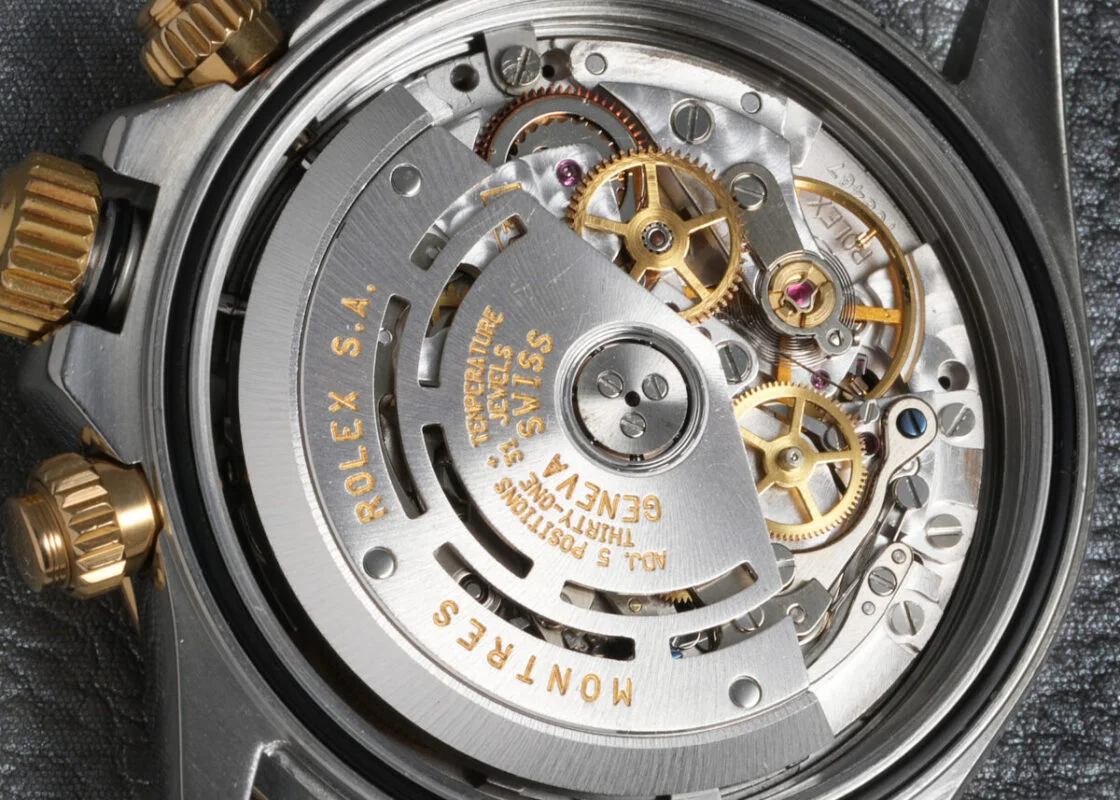What Makes Rolex Movements So Special?
Introduction
When it comes to luxury watches, few names carry the prestige and recognition of Rolex. Whether you're a first-time buyer, a seasoned collector, or simply an admirer, one question often arises: what makes a Rolex movement so exceptional? In this article, we explore the craftsmanship, history, and innovations that position Rolex movements as the gold standard of precision and reliability in the watch industry.
The Heart of a Rolex: An Overview
Often referred to as the “engine” of the watch, the movement is responsible for timekeeping and function. Rolex designs and manufactures nearly all of its movements entirely in-house, a rarity in the watch world. This vertical integration ensures unmatched quality control, consistency, and innovation—hallmarks of the brand's reputation.
Key Characteristics of Rolex Movements
-
In-House Production: Every essential component, from the oscillator to the mainplate, is crafted within Rolex’s own facilities.
-
COSC Certification: Most Rolex movements are certified chronometers, meeting or surpassing COSC accuracy standards (-4/+6 seconds per day).
-
Advanced Materials: Rolex uses paramagnetic materials like the Parachrom hairspring to enhance resistance to magnetic fields.
-
Innovative Features: Technologies such as the Perpetual rotor for automatic winding and the Syloxi silicon hairspring in select models reflect Rolex’s drive for continuous improvement.

A Legacy of Precision and Innovation
Rolex's reputation for precision and durability is the result of nearly a century of relentless innovation. Several landmark achievements have cemented its legacy:
-
Oyster Case (1926): The world’s first truly waterproof watch case, a revolutionary design that protected the movement from moisture and dust.
-
Perpetual Rotor (1931): Rolex introduced a self-winding mechanism powered by wrist motion, setting a new standard for convenience and reliability in mechanical watches.
-
Deep Sea Special (1960): A specially engineered Rolex accompanied the Bathyscaphe Trieste to the bottom of the Mariana Trench. The watch survived the pressure at nearly 11,000 meters, emerging fully functional—a testament to Rolex’s engineering excellence.
"Rolex has never been content to rest on past achievements. The brand’s DNA is all about pushing mechanical boundaries," notes a veteran watch historian.
Commitment to Research and Development
Behind Rolex’s enduring success is its unwavering investment in R&D. A significant share of revenue is directed toward experimenting with new materials, refining components, and improving manufacturing techniques.
Rolex’s proprietary Research Laboratory has pioneered materials like 904L stainless steel (Oystersteel)—more corrosion-resistant and durable than standard steel used by most watchmakers. This spirit of innovation ensures every Rolex remains at the cutting edge of mechanical watchmaking.
Inside a Rolex Movement: Key Components Explained
-
Mainspring
The energy source of a mechanical watch. As it winds—manually or via the rotor—it stores potential energy, gradually releasing it to power the movement. -
Gear Train
Transfers energy from the mainspring to the escapement, regulating the motion of the hands. Rolex meticulously engineers each gear for minimal friction and optimal efficiency. -
Escapement & Balance Wheel
This duo regulates timekeeping. The Parachrom hairspring, developed by Rolex, offers resistance to shocks and magnetic fields, ensuring consistent performance under everyday conditions. -
Automatic Rotor (Perpetual Rotor)
Rolex’s Perpetual rotor captures wrist motion to keep the watch self-winding. It maintains a stable power reserve, especially when worn daily. -
Winding Crown & Sealing System
More than just a knob, the Rolex crown is part of a sophisticated system of gaskets that safeguard the movement. In many models, it enables water resistance up to 100 meters or more.

Why Rolex Movements Command Higher Prices
Rolex watches carry premium price tags for several key reasons:
-
Extensive Testing: Each watch undergoes rigorous assessments for accuracy, durability, and water resistance, increasing production time and cost.
-
Superior Materials: Rolex employs high-grade metals, proprietary alloys like Oystersteel, and scratch-resistant sapphire crystal.
-
Fully In-House Manufacturing: From design to assembly, every component is developed under Rolex’s roof—an approach that demands significant resources.
-
Brand Heritage: Beyond the movement, Rolex symbolizes prestige, success, and reliability, which contributes to its resale and collectible value.
However, the highest cost drivers are often brand prestige and R&D/testing, not just the materials or mechanics. That’s where Superclone Rolex movements offer a compelling alternative—retaining virtually the same craftsmanship and quality of materials, without the inflated pricing tied to brand legacy.
The Real Value in a Rolex
A Rolex is far more than a tool for telling time. Each watch represents:
-
Decades of innovation and engineering
-
Breakthroughs in water resistance, materials science, and movement efficiency
-
A globally recognized symbol of excellence and personal achievement
For collectors, a genuine Rolex is an investment in horological history. But for those who value quality over branding, our Rolex Superclones deliver comparable craftsmanship—minus the premium tied to the Rolex name.
Common Questions About Rolex Movements (FAQ)
1. How often does a Rolex need servicing?
Typically every 5 to 10 years, depending on the model and usage. Servicing includes cleaning, lubrication, and accuracy regulation. Like a car, regular maintenance ensures optimal performance. We recommend a check-up every 5 years by a trusted local watchmaker.
2. What makes Rolex movements different from other luxury brands?
Rolex builds nearly everything in-house, ensuring strict quality control. Key innovations like the Parachrom hairspring and Oyster case reinforce durability and precision. While many luxury brands rely on third-party movements, Rolex’s vertical integration sets it apart.
3. Are all Rolex movements automatic?
Yes, most modern Rolex watches use automatic (self-winding) movements. Historical exceptions like the Oysterquartz exist, but the current lineup focuses almost exclusively on mechanical automatics.
-
Is it difficult to repair a Rolex movement?
Repairing or servicing a Rolex movement requires specialized tools and expertise. Given Rolex’s global popularity, most skilled watchmakers are familiar with handling and repairing these movements. -
Do Rolex movements hold value over time?
Rolex watches typically retain or even appreciate in value thanks to their brand prestige, steady demand, and limited production. The durability of both movement and case contributes to their longevity. While no investment is guaranteed, Rolex often outperforms many other watch brands in the resale market.
For more information, visit the official Rolex website at Rolex.com or join discussions on trusted forums like RolexForums.com.
Conclusion
Rolex movements stand out not merely due to marketing but because of a long heritage of craftsmanship, innovation, and precision. Whether you’re a beginner or an experienced collector, understanding the engineering behind Rolex can enhance your appreciation and guide your purchasing choices.
If you’re interested, Rolex Expert offers a curated selection of replica Rolex watches featuring Swiss Superclone movements. Our experts provide personalized advice, detailed maintenance guidance, and support to ensure a satisfying ownership experience. Visit our website or contact us to learn more.



































































